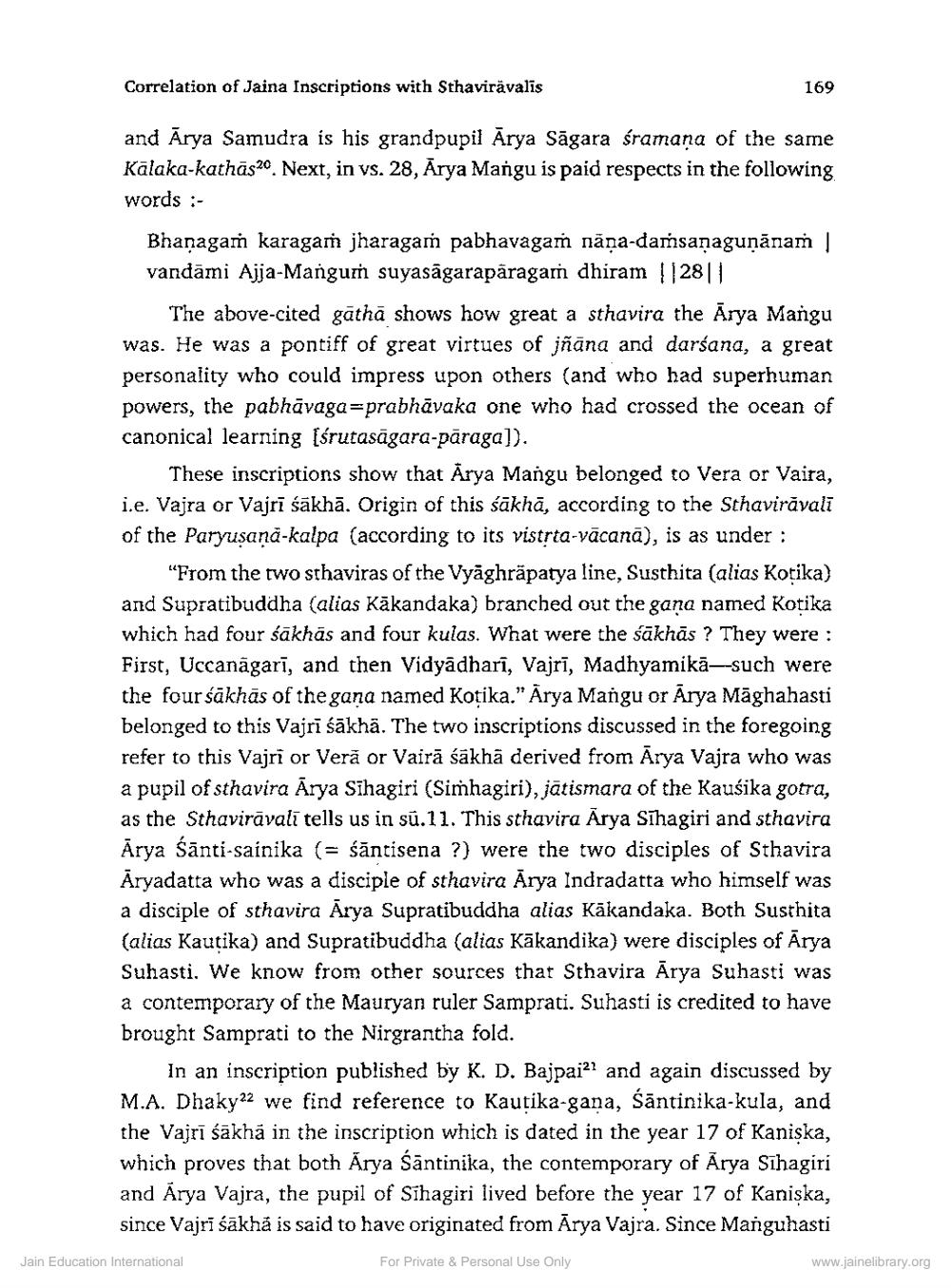________________
Correlation of Jaina Inscriptions with Sthavirävalis
169
and Arya Samudra is his grandpupil Arya Sāgara śramana of the same Kalaka-kathāṣ20 Next, in vs. 28, Ārya Mangu is paid respects in the following words :
Bhanagam karagam jharagam pabhavagam nāņa-damsanaguņānam vandāmi Ajja-Manguin suyasāgarapäragam dhiram 128||
The above-cited gathā shows how great a sthavira the Arya Mangu was. He was a pontiff of great virtues of jñāna and darśana, a great personality who could impress upon others (and who had superhuman powers, the pabhāvaga=prabhāvaka one who had crossed the ocean of canonical learning (śrutasāgara-paraga]).
These inscriptions show that Arya Mangu belonged to Vera or Vaira, i.e. Vajra or Vajrī sākhā. Origin of this sākhā, according to the Sthaviravali of the Paryusana-kalpa (according to its vistrta-vācana), is as under :
"From the two sthaviras of the Vyāghräpatya line, Susthita (alias Kotika) and Supratibuddha (alias Kākandaka) branched out the gana named Kotika which had four śākhās and four kulas. What were the sākhās ? They were : First, Uccanāgarī, and then Vidyadharī, Vajrī, Madhyamikā--such were the four sākhas of the gana named Kotika." Arya Mangu or Arya Māghahasti belonged to this Vajri sākhā. The two inscriptions discussed in the foregoing refer to this Vajri or Veră or Vairā sākhā derived from Arya Vajra who was a pupil of sthavira Arya Sihagiri (Simhagiri), jātismara of the Kausika gotra, as the Sthavirāvali tells us in sû.11. This sthavira Arya Sīhagiri and sthavira Arya śānti-sainika (= śāntisena ?) were the two disciples of Sthavira Āryadatta who was a disciple of sthavira Arya Indradatta who himself was a disciple of sthavira Arya Supratibuddha alias Kākandaka. Both Susthita (alias Kautika) and Supratibuddha (alias Kākandika) were disciples of Arya Suhasti. We know from other sources that Sthavira Ārya Suhasti was a contemporary of the Mauryan ruler Samprati. Suhasti is credited to have brought Samprati to the Nirgrantha fold.
In an inscription published by K. D. Bajpai?? and again discussed by M.A. Dhaky22 we find reference to Kautika-gana, śāntinika-kula, an the Vajrī sākhả in the inscription which is dated in the year 17 of Kaniska, which proves that both Arya Sāntinika, the contemporary of Arya Sīhagiri and Arya Vajra, the pupil of Sihagiri lived before the year 17 of Kaniska, since Vajrī sākhá is said to have originated from Arya Vajra. Since Manguhasti
Jain Education International
For Private & Personal Use Only
www.jainelibrary.org




